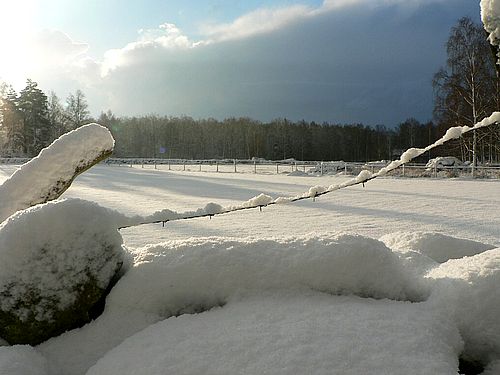Snow storms are usually caused by rising moist air within an extratropical cyclone
(low pressure area. The cyclone forces a relatively warm, moist air mass up and over
a cold air mass. If the air near the surface is not sufficiently cold over a deep enough layer, the snow will
fall as rain instead.
Because these extratropical cyclones (low pressure areas) also have wind circulating around them, strong winds
can develop in the stronger storms, sometimes leading to blizzard conditions.
The total amount of snowfall that a snowstorm produces depends upon (1) how fast the warm air is rising over the cold air, (2) how much water vapor is available to form precipitation,
and (3) how fast the storm is moving (slower will produce more snow at a location).
Lake effect snow storms are different from cyclonic snowstorms. Very cold air flowing over a large ice-free lake will pick up
water vapor evaporated from the lake surface and result in cloud and precipitation formation downwind. The distance required for this to occur is at least tens of miles, and usually 100 miles or more.
A third class of snowstorm is "orographic", which occurs in mountainous regions, where air is forced to rise as it flows over the mountains
causing large snowfall accumulations. Usually the heaviest orographic snows are where an extratropical cyclone's snow is enhanced by mountain uplift as the winds flow from
lower elevations to higher elevations. These produce the heaviest snowfalls, sometimes many feet deep in a single storm.
|



